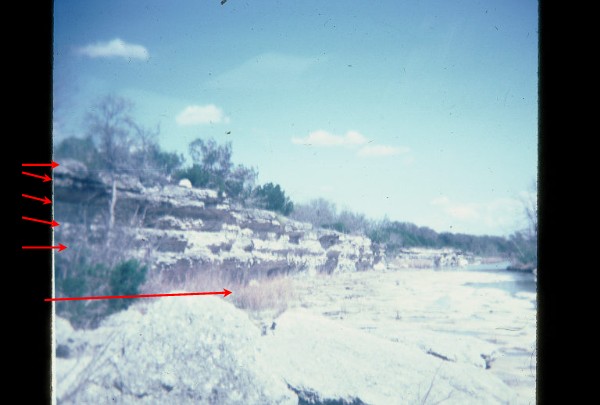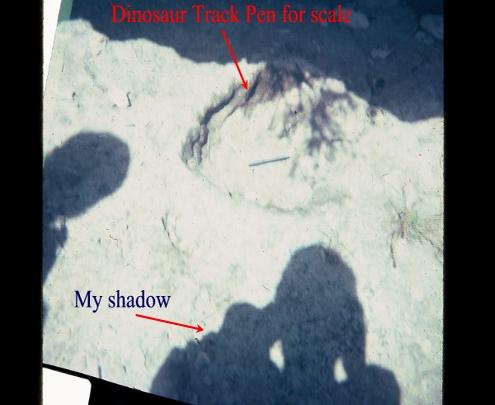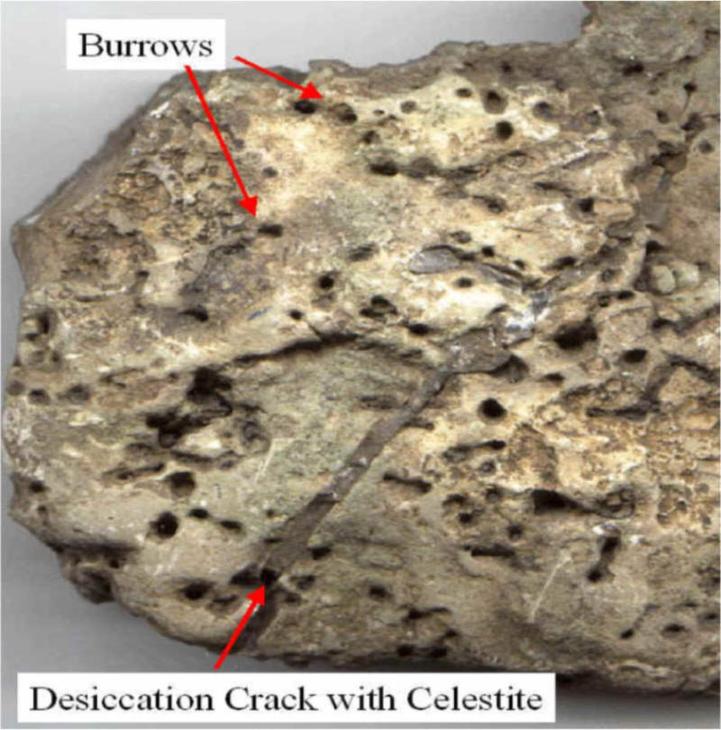Creation Science Articles
Carbonate hardgrounds disprove the global flood
Copyright 2003 G.R. Morton. This can be freely distributed so long as no changes are made and no charges are made.
In March of
1984, I was sent on an AAPG field trip to look at carbonates in
South Texas. The area we examined has at least 15,000 feet of
sedimentary rock below it. Global flood advocates claim that all of
this sediment was deposited by Noah's catastrophe. The rocks we saw
presented a serious challenge to that view, a view which at that
time, I held.
One of the
sites was along Bear Creek where we saw a series of hardgrounds. A
hard ground is a slowly deposited carbonate which is very hard and
resistant to erosion, which is why they form ledges along the banks
of this creek. What happens is that the land subsides, and a softer
form of carbonate is deposited, which then fills the void caused by
the sea level drop. As the carbonate gets near the sea surface, the
rate of deposition drops and the hardground carbonate is deposited.
The fuzzy photo below is from a slide I took which shows the
hardground limestone ledges jutting out from the cliff face.

But that
doesn't stop biological activity. In the shallow waters, especially
when the softer carbonates were being deposited, dinosaurs walked in
search of food. Below is a photo of a dinosaur track which walks in
the softer sediment above the lowest observed hardground. If this
was during the middle of the global flood, at a point in the flood
where ,There are creatures, like clionid sponges, which burrow into
carbonate rocks.

But an even
more interesting record of the time it takes for this section to be
deposited comes from the nature of the biologic activity seen on the
hardgrounds. Each hardground is highly burrowed by animal life. I
believe these animals are clionid sponges which eat shell material
as part of their search for food. Below is a rock I brought back
from this sight. You can clearly see the burrows, and the fact that
the waters were very shallow is shown in the crack which was filled
by an evaporative mineral, celestite.

There are six
ledges along this creek bank, each has burrows and desiccation
cracks just like this. In the rocks in between these hardground
ledges are burrows of other animals and dinosaur tracks. It takes
time for burrowers to burrow, and it takes time for dinosaurs to
walk. Given that there was already 15,000 feet of sediment beneath
this site, and there are more than 50,000 feet of total sediment
which lie stratigraphically above rocks of this age in the Gulf of
Mexico, just a three hundred miles to the east. If all these vast
thicknesses of rock are due to the flood, then this site is smack in
the middle of the raging flood. So what were the dinosaurs doing
walking around when vast quantities of sediment were falling on
their heads? And how fast must one believe that burrowers can
burrow? Young earth creationists have much to explain and in two
hundred years of geological science, they keep getting further and
further behind.
Did you know that you can be a Christian,
and believe that the earth is billions of years old? The
author of this article, Glenn Morton, made the transition from young
earth creationism to old earth creationism. To learn more
about old earth creationism, see
Old Earth Belief,
or check out the article
Can You Be A
Christian and Believe in an Old Earth?
Feel free to check out more of this website. Our goal is to
provide rebuttals to the bad science behind young earth creationism,
and honor God by properly presenting His creation.
